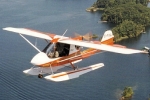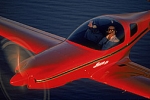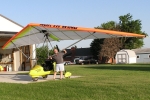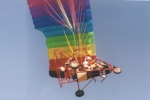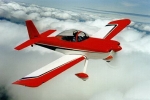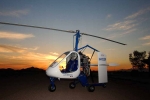|

G.
Michael Huffman
Sport Aviation Specialties, LLC
1512
Game Trail
Lawrenceville, GA 30044
770-548-1206

Copyright © 2005 - 2021
G. Michael Huffman
All rights
reserved
Disclaimer:
FAA regulations, orders, policies, ASTM publications, and other documents are
subject to change and interpretation. Any information on this site that pertains
to those documents is for reference only. It is the responsibility of visitors
to verify all such information with the FAA or ASTM. Site
optimized for 800 x 600 display |
- Do
you need an airworthiness certificate issued for a Standard category or an Experimental
aircraft?
Are
you engaged in an FAA/CAA design approval program (TC, STC, PMA, or TSO) and need
conformity inspections for your prototypes parts and assemblies?
- Are
you a manufacturer or parts distributor who needs domestic or export airworthiness
approval for articles?
- Are
you building an Experimental- Amateur-Built aircraft and need an airworthiness
certificate issued?
Are
you building an aircraft from an SLSA manufacturer's kit and need an airworthiness
certificate issued?
- Are
you an SLSA aircraft manufacturer and need production flight test permits and
airworthiness certification for your production aircraft?
- Do
you own a Special Light Sport Aircraft (S-LSA) and want to change its certification
to Experimental Light-Sport so you can make modifications and perform your own
annual condition inspections?
(Click
here for an explanation of the differences
between these certifturee types.)
Then,
you will likely need the services of a Designated Airworthiness Representative
(DAR). To learn more about our DAR services, click the links below. Or, simply
scroll down the page.
What
is a DAR?
(Back)
A DAR is a private citizen who has extensive experience in aviation, has received
special training from FAA, and has been delegated the authority to perform certain
FAA functions. FAA
Aviation Safety Inspectors (ASIs--who are FAA employees) can and sometimes do
perform the functions of a DAR. However, in practice, due to FAA budget constraints
and increasing workloads, most such tasks are performed by DARs. Our
DAR Services
(Back)
Michael Huffman, owner of Sport Aviation Specialties, is a DAR authorized to perform
the following functions: If you have need of these services,
please contact us by phone or email. -
Issue
original standard airworthiness certificates for U.S.-registered aircraft and
original airworthiness approvals for engines, propellors, or articles that conform
to the approved design and are in a condition for safe operation.
-
Issue
special airworthiness certificates in the experimental category for the purpose
of showing compliance with FAA requirements for U.S.-registered aircraft which
have undergone changes to the type design and require flight test before issuance/reissuance
of an airworthiness certificate.
Issue original/recurrent special airworthiness certificates in the experimental
category for the purposes of performing market surveys, research and development,
and crew training on U.S.-registered aircraft.
Issue
original/recurrent special airworthiness certificates in the experimental category
for the purpose of air racing or operating exhibition U.S.-registered aircraft
located in the Unites States.
Issue
special flight permits for U.S.-registered aircraft for production flight testing,
conducting customer demonstration flights, overweight operations, and delivering
or exporting aircraft.
Issue
amendment/replacement for standard or special airworthiness certificate if the
proper documentation can be obtained from the appplicant.
Issue
original/recurrent domestic or export airworthiness approval for engines, propellers,
and articles.
Make
conformity determinations on articles to be used for design evaluation programs;
for example TC, and Supplemental Type Certification (STC) programs.
Issue
conformity certifications on behalf of the CAA for articles manufactured by U.S.
suppliers for non-U.S. product manufacturers.
-
Issue
original/recurrent and replacement special airworthiness certificates, experimental,
for the purpose of operating U.S.-registered amateur-built aircraft (EAB).
-
Issue
original/recurrent and replacement special airworthiness certificates, experimental,
for the purpose of operating U.S.-registered light-sport aircraft (ELSA).
- Issue
original/recurrent and replacement special airworthiness certificates for U.S.-registered
light-sport category aircraft (SLSA) and special flight permites for light-sport
category aircraft production flight-test operations.
The
EAB & ELSA Certification Process (Back)
Applicants for experimental amateur-buillt (EAB) and experimental light-sport
aircraft (ELSA) airworthiness certificates often have questions about what is
required. The certification process for both is very similar. This section describes
the process and points out differences between the two. NOTE:
it is highly recommended that you begin discussions with your chosen DAR well
ahead of the time for certification. The process can be complicated and the DAR
can offer invaluable help in avoiding potential pitfalls.
The
Basic Steps
(Back)
The basic steps for certificating an E-AB or E-LSA are very similar, as described
below. Differences are explained in the subsequent sections. Click any of the
links below for details, or simply scroll down the page.
Determine
Aircraft Eligibility
(Back)
Your first task is to determine which certification category your aircraft
is eligible for. To
be eligible for experimental amateur-built certification: To
be eligible for experimental light-sport certification: -
The
aircraft must meet the light-sport aircraft specifications regarding weight, speed,
and configuration.
-
The
aircraft must be either a fixed-wing airplane, a weight-shift aircraft, a powered
parachute, a gyroplane, a glider, or a lighter-than-air vehicle. Helicopters are
not eligible.
-
The
aircraft must fall into one of the following classifications.
-
Existing
"ultralight-like vehicles" Note that the final
January 31, 2010 deadline for certificating aircraft under this classification
has passed--no other aircraft will be certificated under this provision.
-
Aircraft
built from a kit produced by an S-LSA manufacturer and assembled in accordance
with the manufacturer's instructions. Note that the 51% rule does not apply to
such kits. If your aircraft falls into this classification,
please phone or email us for instructions.
-
Aircraft
previously issued an airworthiness certificate as an S-LSA, for which the owner
desires to change the certification to E-LSA, either to allow modifications and/or
annual condition inspections by the owner who has obtained a Light-Sport Repairman-
Inspection (LSRI) certificate or because the SLSA manufacturer has gone out of
business. If your aircraft falls into this classification,
please phone or email us for instructions.
Register
the Aircraft
(Back)
Before
you start the registration process, we recommended you contact us. We can guide
you through the process, let you know where to obtain forms, and help you avoid
pitfalls and unpleasant surprises. It is in everyone's best interest for the certification
process to go smoothly. We
also highly recommend you purchase EAA's Experimental Aircraft Certification Kit.
It contains all the necessary forms, placards, dataplate, and a Step-by-Step
Certification Guide, which takes you through the entire certification
process. To order the guide, visit eaa.org or
aircraftspruce.com The
Certification Guide provides detailed instructions for registering your
aircraft with the FAA and obtaining an N-number. In
summary: -
You'll
first need to decide whether you want to choose your own N-number or accept one
automatically assigned by FAA.
If you want to have a special N-number,
you will need to reserve it, which can be done online here.
You can check with FAA Aircraft Registry to see what N-numbers are available here.
Alternatively, you can submit a request letter to FAA Aircraft Registration Branch,
AFS-750, PO Box 25504, Oklahoma City, OK 73125, but this process takes more time.
List five different N-number choices in your letter and include a check for $10
payable to the U.S. Treasury.
-
After
receiving your special N-number reservation, or if you have decided to accept
the one assigned by FAA, the next step is to to fill out and submit the following
forms. You'll need to include a check for $5.00 payable to FAA Aircraft Registry.
-
FAA
Form 8050-1, Aircraft Registration Application -
FAA
Form 8050-88, Affidavit of Ownership- for E-AB
Here
is a caution concerning filling out the registration application form.
The manufacturer, model, serial number, N-number, and owner's name listed on your
registration certificate are the "master" data by which FAA knows your
aircraft. All your other forms must agree with the registration data. Unfortunately,
inconsistencies in FAA forms can result in confusion; for instance, the registration
application form refers to "aircraft manufacturer," while the application
for airworthiness form refers to "builder's name," both of which mean
exactly the same. For
an E-AB, you should generally use your own name as the manufacturer/builder. If
you built the aircraft from a kit, the model designation and serial number can
be that assigned by the kit manufacturer. If you significantly modified the aircraft
from the kit configuration, you may want to modify the model number, i.e., "Jones
RV-7A" Keep
it short--remember, what you list here will have to appear on all other forms
and on your fireproof dataplate. There may not be room for long names on your
dataplate or forms. As an example, where more than one person owns the aircraft,
list only one as the manufacturer or builder. The other names should be listed
as owners, but not as the manufacturer or builder. Keep
model numbers short for the same reason; for instance,
rather than listing the model as "RANS S-7S Courier," just list "S-7S." Apply
the N-Number
(Back)
FAR Part 45 has very specific requirements for N-numbers. For instance, it
says they should be painted on or "affixed by any other means insuring a
similar degree of permanence." Vinyl tape letters available from aviation
supply companies meet this requirement if there is a reasonable expectation that
removing them would damage the paint; however, typical office supply or hardware
store letters do not. It
also says N-numbers must be legible, must contrast with the background, and must
have no ornamentation. Obviously, many N-numbers seen on aircraft in use do not
meet these requirements, but you will need to do so to get your aircraft certificated. There
are specifications on the letter height, letter width, stroke width, spacing of
the letters, and the placement of the N-number on the aircraft. All E-LSAs and
any E-ABs that do not exceed 180 knots cruising speed are allowed to use 3"
numbers; otherwise, 12" numbers are required. Also, 12" numbers are
required on any aircraft penetrating an Air Defense Identification Zone (ADIZ)
or Distant Early Warning Identification Zone (DEWIZ). Note
also that the rules are a little different for powered parachutes and weight-shift
aircraft. There, N-numbers must be 3" high displayed horizontally on diametrically-opposed
locations on each side of the fuselage or component of the fuselage. Some PPCs
and weight-shift aircraft do not have a location large enough to accommodate 3"
N-numbers; in those cases, it is allowable to mount a plate on the structure using
clamps or other means, onto which to apply the 3" numbers. Numbers smaller
than 3" or numbers on easily removable items such as saddlebags are not allowed. If
you are in doubt about N-numbers, contact us. Apply
an "Experimental" Placard
(Back)
FAR 45.23 requires a placard with the word "Experimental" in letters
at least 2" high to be applied "near each entrance to the cabin, cockpit,
or pilot station." Apply
a Passenger Warning Placard
(Back)
The operating limitations document that will be issued by the DAR for your
E-AB or E-LSA requires that you advise each passenger of the experimental nature
of the aircraft and that it does not meet the certification requirements of a
standard certificated aircraft. This is accomplished by applying a placard in
view of passengers with the following wording. "PASSENGER
WARNING - THIS AIRCRAFT DOES NOT COMPLY WITH FEDERAL SAFETY REGULATIONS FOR STANDARD
AIRCRAFT" Apply
Instrument Markings
(Back)
There is no minimum set of instruments or equipment required to certificate
either an E-AB or an E-LSA. (However, you should note that if you plan to equip
the aircraft for night or IFR flight, a specific complement of instruments and
equipment is required--see FAR 91.205 for a list) In any case, if such instruments/equipment
are installed, they must be marked. Each flight, engine, and other instrument
must have markings on its face indicating the acceptable operating range, as defined
below. -
The
airspeed indicator must have the following markings (determined from the kit manufacturers
data where applicable). -
A
green arc, the bottom of which is the anticipated power-off, no-flaps stall speed
and the top of which is the maximum anticipated cruise speed -
A
red line, which is located at the never-exceed speed of the aircraft. -
If
equipped with flaps, a white arc, the bottom of which is the power-off, full-flaps
stall speed and the top of which is the maximum flaps-extended speed
-
The
oil temperature gauge, oil pressure gauge, coolant temperature gauge, tachometer,
or other engine/propeller gauges must be marked with green arcs indicating normal
operating ranges and/or red lines indicating maximum values as determined from
the engine manufacturer's data.
-
It
is recommended that the
compass have a compass correction card, which is created by pointing the aircraft
on known headings on the ground and recording the compass reading. This is done
using a "compass rose" painted on an airport ramp. If your airport does
not have a compass rose, you may wait until after the aircraft is certificated,
fly to an airport that does, and create the compass correction card there.
Many
of the new electronic flight and engine instruments have built-in programmable
alarms that will produce audible or visual annunciation if they are exceeded.
If properly programmed to the aircraft/engine/propeller specifications, these
alarms are considered adequate in place of colored arcs or textual placards on
conventional instruments. Apply
Placards on All Controls, Switches
(Back)
Each control, indicator, switch, circuit breaker, fuse, etc. is required
to be labeled to identify its function and direction of operation (e.g., "Landing
Light- On- Off"). Where applicable, word the labels to correspond with the
position of the control to be used in an emergency (e.g., "Throttle- Push
On," "Carburetor Heat- Push Cold"). Trim
and flap controls and indicators should be marked showing the limits of operation,
the direction of operation, and the correct position for normal takeoffs and landings. Install
a Fireproof Dataplate
(Back)
"Fireproof" in this case means having an ability to resist fire
equivalent to steel. The EAA supplies a stainless steel dataplate with blanks
for manufacturer/builder, model, and serial number. Note that earlier EAA dataplates
that contain blanks for other information such as year built, builder's name and
address, etc are acceptable, but the extra information is not required for certification. FAR
45.11 requires that the dataplate information be marked by "etching, stamping,
engraving, or other approved method of fireproof marking." It also specifies
location and mounting provisions; in general, dataplates should be permanently
mounted (with screws or rivets--not, for instance, pressure-sensitive adhesives)
and located as far aft as possible on the primary structure of the aircraft (not
on a removable access cover, fairing, etc.) If
you are in doubt of how or where to mount your datatplate, contact us. Install
an ELT
(Back)
Unless you own a single-place aircraft, a weight shift aircraft, or a powered
parachute, you will be required to have an emergency locator transmitter (ELT)
that is certified to TSO-C91A (121.5/243 MHz) or TSO-C126 (406 MHz). An
ELT meeting the requirements of TSO-C91a is acceptable; older TSO-C91 ELTs are
not allowed for new installations after June 21, 1995. The difference is that
the newer ELTs have an external antenna to be mounted on the outside of the aircraft
and a small remote panel to be mounted on the aircraft instrument panel; the remote
panel has an indicator light that shows when the ELT has been activated and a
switch to reset the unit. Follow
the manufacturer's instructions in mounting the ELT. It should be mounted as far
aft as possible, in the correct direction to allow activation in a crash. It is
also important that the structure to which the ELT is mounted be adequate to withstand
the weight and G-forces of the ELT without vibrating in flight or failing in case
of a crash. You
might want to consider one of the new digital TSO-C126 406-mHz ELT, some of which
have the ability to broadcast not only the emergency signal, but also the GPS
coordinates of a crash and contact information for the pilot. The 406-mHz units
are currently a good bit more expensive than the TSO C91a units ($900- $1500 versus
$175-$400). The
type of ELT you choose may be influenced by what you want it to do, i.e., to either
simply satisfy FAA regulations for an ELT or to provide the best chance of being
found after a crash. As of February 2009, the 121.5-MHz ELT signals are no longer
monitored by the Cospas-Sarsat orbiting satellites. However, they are still routinely
monitored by airliners and ground-based observers.
The location of a 406-mHz signal can be pinpointed much more accurately than that
of a 121.5-MHz signal. Install
Other Required Equipment
(Back)
If your aircraft is based inside the 30-nautical-mile-radius Mode C ring
associated with the Class B airspace around several major airports, you will most
likely need a radar transponder and altitude encoder. However,
there is an exception that may apply to a few E-ABs and E-LSAs. The way it is
stated in FAR Part 91.215, if your aircraft was "originally certificated
without an engine-driven electrical system" and has not been retrofitted
with such a system, a transponder is not required. This statement is interpreted
by the FAA to apply only to engines such as the Continental A-65/75 that were
originally manufactured without generators or alternators and for which fitting
a generator or alternator would be difficult. That means if your engine is a newer
Continental or Lycoming, a 2-stroke or 4-stroke Rotax, or any other engine that
is easily capable of having an alternator or generator,
the exception does not apply. Note:
as of January 1, 2020, aircraft operating in airspace requiring a radar transponder/encoder
are also required to be equipped with FAA-approved Automatic Dependent Surveillance-
Broadcast- Out (ADS-B Out) equipment. Perform
a Weight and Balance
(Back)
Actually, the term "weight and balance" applies to fixed-wing E-ABs
and E-LSAs. A better term for weight-shift aircraft and powered parachutes is
"weight and loading," since center of gravity calculations generally
do not apply to those aircraft. The reason is that the frame or carriage of such
machines is suspended from a pivoting "hang point," so the distribution
of weight between pilot, passenger, fuel, baggage, etc, often do not affect the
stability of the aircraft. However, the location of the hang point relative to
the center of lift of the wing or the parachute may affect performance and stability.
If you are certificating a weight-shift aircraft or powered parachute, obtain
the allowable weight, weight distribution, and hang point data from the manufacturer. For
fixed-wing aircraft, we like for applicants to use our weight and balance form;
when you get us involved in your certification, we will supply you a copy. A Microsoft
Excel spreadsheet, it provides step-by-step instructions for performing the weight
and balance, it provides a sheet to record the equipment installed in the aircraft
at the time, and it automatically performs weight and balance calculations. The
printed output from the form goes into the aircraft records. You'll
need to perform calculations for most-forward CG, most-aft CG, and the actual
loading condition that will be used for your Phase I flight tests. The FAA has
established a very specific procedure for the most-forward and most-aft CG calculations;
the instructions for our spreadsheet explain the procedure. If
your aircraft is built from a kit, the kit manufacturer can supply you with the
weight, center of gravity limits, datum location, and the location of the pilot,
passenger, fuel, oil, coolant, and baggage weights relative to the datum. On the
other hand, if your aircraft is an original design or has been modified, you will
need to make your own determination of those parameters. Provide
Aircraft Maintenance Logbooks
(Back)
At
the time you present your aircraft for certification, you will need a maintenance
logbook for at least the aircraft and preferably other ones for the engine and
propeller, not associated with your pilot logbook. Blank logbooks are easily obtainable
from a local FBO or from any of a number of aviation supply companies. The reason
for having separate logbooks is that engines and propellersoften get removed from
one airframe and installed on another. The
airframe logbook should identify the aircraft builder/manufacturer, model designation,
and serial number exactly as shown on the aircraft registration certificate. It
should also identify the manufacturer, model number, and serial number of the
engine and propeller installed in the aircraft at the time of certification. If
the engine or propeller is subsequently changed, an entry should be made in the
airframe log noting the new manufacturer/model/serial number data. The
engine and propeller logbooks should identify the engine manufacturer, model number,
and serial number exactly as shown on the engine or propeller dataplate. Anytime
maintenance or inspection is done, an entry should be made in the appropriate
logbook. Each entry should be dated; the total time on the engine or airframe
and the time since overhaul of the engine logged; a description of the maintenance
or inspection entered; and the entry signed by the person doing the maintenance
or inspection. In the case of an annual condition inspection, the certificate
type and number of the person perfoming the inspection should also be logged. Note
that only items directly pertaining to the engine or its accessories (starter,
alternator, carburetor, magnetos, vacuum pump, etc) should be logged in the engine
logbook. Other items pertaining to the engine compartment area of the aircraft,
including the fuel system, exhaust system, engine control system, engine baffling,
oil cooler, radiator, etc should be logged in the airframe logbook. A
similar rationale applies to the propeller logbook. Inspect
Your Aircraft & Correct Deficiencies
(Back)
Prior to making an appointment for the DAR visit, you will need to inspect
your aircraft, document the results on an inspection checklist, correct any deficiencies
found, and make an entry in the airframe logbook to that effect. The
DAR's responsibility is to make a determination whether the aircraft "is
in a condition for safe operation," in the words used by FAA. Your responsibility
is to correct any conditions that would cause it not to be in a condition for
safe operation. You
may use a checklist from an FAA publication such as Advisory Circular 90-89A or
one provided by the kit manufacturer. Or you may make your own checklist. However,
to make our visit go smoothly, we like for applicants to use our own checklist,
which we will provide when you get us involved in your certification. At that
time, we will coordinate with you on specific items we will be looking for. After
you have completed your inspection, filled out the inspection checklist, and corrected
deficiencies, you will need to make and sign an entry in the airframe logbook
documenting the inspection, to be worded as follows. "I
certify that this aircraft has been inspected on [insert date] in accordance with
the scope and detail of appendix D to part 43, and was found to be in a condition
for safe operation." A
word about compliance with FAA Airworthiness Directives (ADs) is in order. Confusion
has existed as to whether E-ABs and E-LSAs must comply with ADs. The question
is pertinent to any aircraft that has FAA-approved engines, propellers, seat belts,
magnetos, carburetors, instruments, etc. Here's
the bottom line: the FAA regulations and guidance do not specifically define whether
AD compliance is required. However, the DAR's job is to determine that the aircraft
is "in a condition for safe operation" (FAA terminology). Most DARs
work under the premise that since ADs describe known unsafe conditions, they must
be complied with in order to make that statement. If you believe a particular
AD is not applicable to your situation, talk with your DAR about it in advance. Assure
the Aircraft is Complete
(Back)
DARs are not allowed to certificate an uncompleted aircraft. Therefore, wait
until you get everything finished before setting up the appointment for our visit.
The idea is that as soon as we hand you the airworthiness certificate, you should
be able to install the engine cowling and access covers and go fly. Complete
the FAA Paperwork
(Back)
In addition to the paperwork you have already completed, you will also need
to submit additional documents. NOTE:
as of June 30, 2020, the FAA requires these documents to be submitted using a
new FAA computer program known by the complicated title Aviation Safety Knowledge
Management Environment (ASKME) Airworthiness Certification (AWC) tool. Paper forms
are no longer allowed. Applicants for an airworthiness certificate must first
create an account/login on the AWC page of the FAA website. After doing so, the
applicant must complete and digitally sign an online version of FAA Form 8130-6
Application for Airworthiness Certificate. In addition, the applicant must upload
scanned copies of other paper documents, including but not limited to the following: This
is a complicated process and it is highly recommended that applicants coordinate
with their chosen DAR before attempting it.
The
DAR Visit
(Back)
When the DAR arrives, the paperwork should be complete and the aircraft ready
to fly. Unless
other advance arrangements have been made with the DAR, the aircraft should be
located indoors with good lighting and, if practical, some means of environmental
temperature control. The engine cowling and all access panels should be removed
and the aircraft thoroughly cleaned. It is a good idea to provide a creeper or
mats for the DAR's inspection of the underside of the aircraft and a worktable,
desk, or other surface for paperwork. Treat
the inspection seriously. Although the DAR may be a friend, in this setting he/she
is an official representative of the FAA. This is not the time to have your airport
buddies hanging around. Be courteous and expect the DAR to also be courteous.
Answer questions promptly and completely when asked; however, keep idle chatter
to a minimum. By all means avoid describing or bragging about past transgressions
of the FARs; such talk puts the DAR on the spot. Remember: when the DAR ain't
happy, nobody's happy! Have
a pad and pencil ready to note any discrepancies the DAR finds. If the up-front
coordination has been handled properly, discrepancies will likely be minor and
can be corrected after the DAR has issued the airworthiness certificate. A
little nervousness is normal. On the other hand, have fun-without exception the
inspections we have been involved with, whether on the giving or receiving end,
have been enjoyable and were frequently occasions for additional learning. At
the conclusion of the inspection, the DAR will likely issue your brand-new airworthiness
certificate and operating limitations, explaining them in detail. At that point,
after reinstalling the engine cowling and access covers, you'll be set to go flying!
Certification
Fees
(Back)
Our minimum fee for issuing an original EAB or ELSA airworthiness certificate
is $700, payable at the beginning of the inspection. Complex aircraft with pressurization
systems, retractable landing gear, turbine engines, etc, may be more. This fee
applies when the aircraft is located no more than an hour's drive each way from
our home base in Lawrenceville, GA. For
locations more than an hour away, additional fees will apply to cover travel time
and expenses. We
want your aircraft to be certificated as much as you do. So, we coordinate closely
with you to assure that all the required steps in the process are accomplished,
that the paperwork is complete, and that the aircraft is ready and will pass the
inspection. However, in rare instances, conditions may be discovered during the
inspection visit that will not allow us to issue an airworthiness certificate.
So, we must add this disclaimer: Payment
of the certification fee does not guarantee issuance of an airworthiness certificate. Frequently
Asked Questions
(Back)
Can I get my Experimental Amateur-Built aircraft re-certificated as
an Experimental Light-Sport Aircraft (or vice versa)? ANSWER: No, once
the aircraft is certificated as one of these types, the certification type cannot
be changed. Can
I get my Ercoupe 415-C, Aeronca 7AC, or other type-certificated aircraft that
meets light-sport aircraft specifications re-certificated as an Experimental Light-Sport
Aircraft? ANSWER: No, as explained in the previous FAQ. I
just bought an Experimental Amateur-Built aircraft from the original builder.
Can I take a 16-hour Light-Sport Repairman- Inspection course and become certified
to perform my own annual condition inspections? ANSWER: Unfortunately,
no. The Light-Sport Repairman- Inspection courses only apply to Experimental Light-Sport
aircraft, not Experimental Amateur-Built aircraft. |
 Sport Aviation Specialties
Sport Aviation Specialties